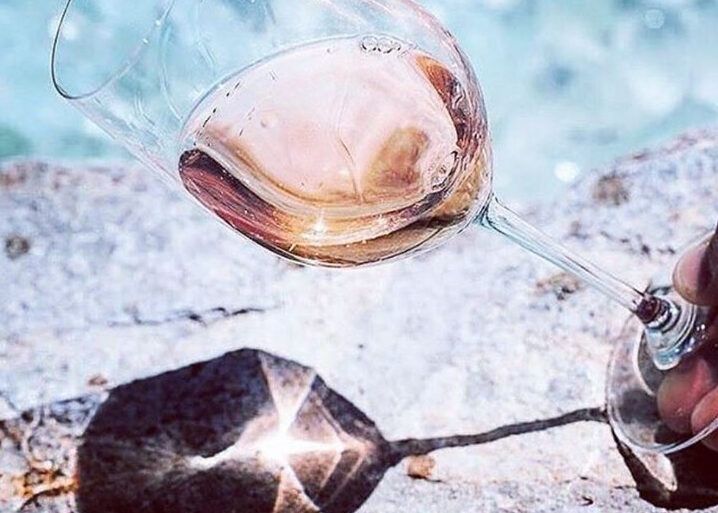Coteaux Varois en Provence is the youngest of the three major appellations and boasts an impressive 57% of all growers organic or HVE-accredited.
Although many appellations in the South of France claim to be in Provence, especially for marketing purposes, there are just nine AOPs in Provence with 96% of the total volume produced by the three most important ones – Côtes de Provence, Coteaux d’Aix-en-Provence and Coteaux Varois en Provence – with Côtes de Provence easily the largest, accounting for 70% of Provence’s entire output, roughly 116 million bottles… that’s a whole lotta’ rosé.
2020 has been kind to Provence, which was France’s most successful wine region last year exports-wise with an increase of 6% against an average fall across France of 5%. According to trade body Vins de Provence, exports to the UK have boomed by 50% with early indications that an easing of Lockdown could see those sales, at the very least, maintained.

Twelve Provence rosés that show off the strength of the 2020 vintage
Stylistically, where Provence rosés in the 2019 vintage could be described as fairly robust, the wines of the 2020 vintage are best described as pretty and elegant, a result of a tricky dry growing season. A mild 2019/20 winter resulted in early vine growth which meant the March frost hit hard; a hot, dry July followed causing water stress, slowing vine growth and, as a result prolonging an already early harvest, with winemakers having time to pick the right moment for fruit maturity and acid balance. Overall, the pink of the 2020s is just a tiny bit lighter than normal.
Generally speaking, outside of Champagne there are very few wines that characterise leisure and luxury quite like a bottle of Provence rosé, especially in a large format on a yacht. Investment in the mid-1990s in a Rosé Research Centre has paid back massive dividends in the appellation with an increasing consistency in quality of the wines and an increase in organic agriculture – almost a third of wineries here are organic or classified High Environmental Value, aided by the Mediterranean climate and the rot-preventing Mistral winds from the North.
Côtes de Provence

Organic farming at Domaine Lolicé
By far and away the largest of the three Provence appellations, Côtes de Provence was formed in 1977 and covers 20,358 hectares and houses 352 independent wineries and 38 co-operatives. 92% of all the wine made here is rosé.
Because the region covers such a vast area including an array of different soil types, aspects and altitude, it is hard to make specific observations about what constitutes a Côtes de Provence wine style, although over the years there has been a move to create individual denominations which are more scientific – there are five of these with Côtes de Provence Sainte-Victoire being the most significant size-wise.
The main grapes used here are: Cinsault, Grenache, Mourvedre, Syrah and Tibouren, with Cabernet Sauvignon and Carignan also used.
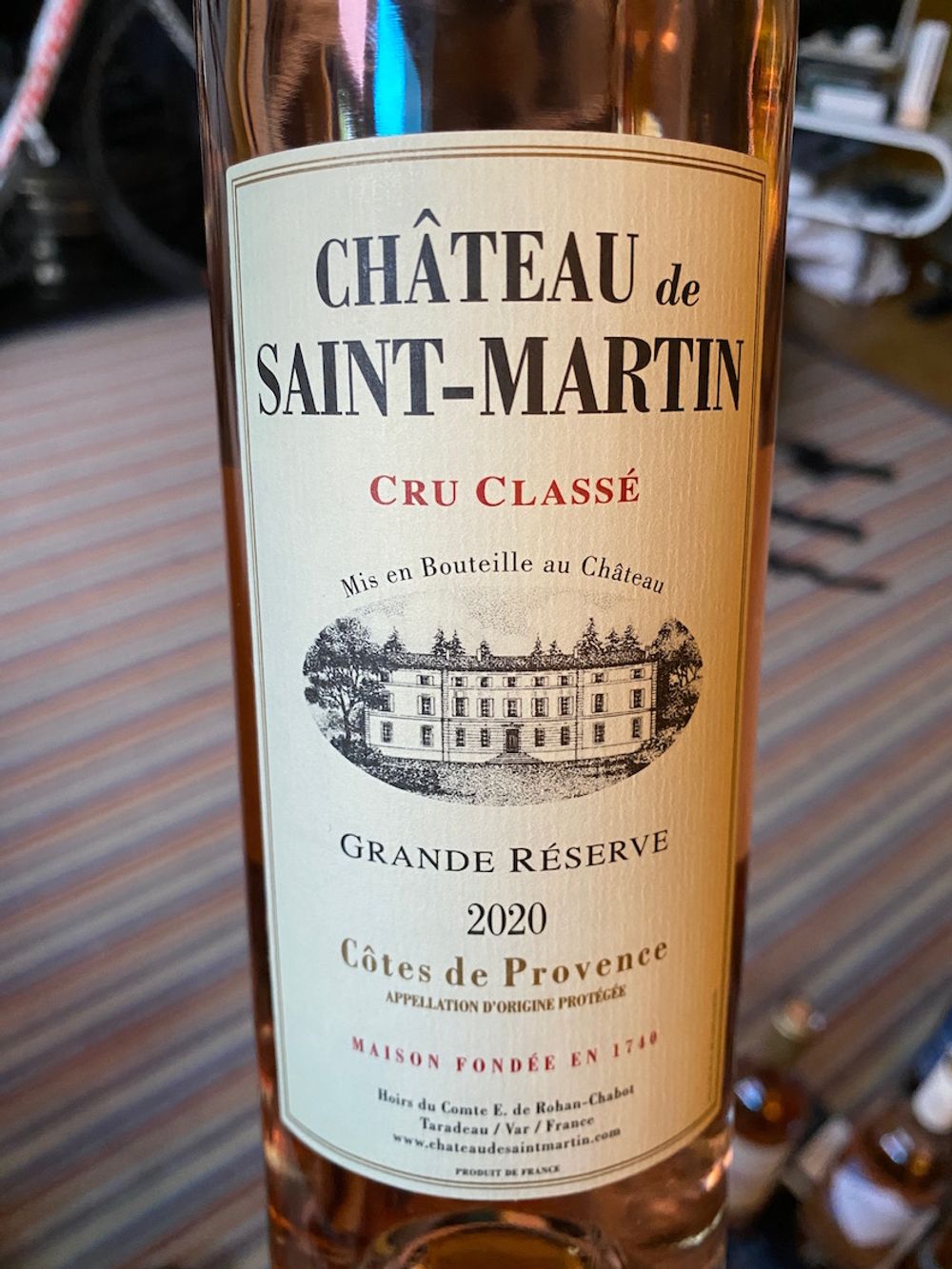
Château de Saint-Martin, Grande Réserve 2020
One of 14 estates currently in the Club des Crus Classés des Côtes de Provence, which reflects quality of vineyard, cellar and history, Chateau de Saint-Martin has been making wine since the 18thcentury and has largely passed the winemaking down from mother to daughter.
This Grande Réserve is a blend of Grenache, Cinsault, Carignan, Syrah and Tibouren. It offers a lot, has a real presence and stands out by being more complex and assertive.
The wine is a darker shade of coral pink; the aromas are complex with watermelon, green apple, raspberry, vanilla and geranium; in the mouth the wine has medium body, more weight but is still fresh and refreshing; nice balance, subtle flavours – ripe grapefruit and watermelon dominate – with good energy and length; dry but fruity, good body and texture. 12.5% abv (Vagabond) £15-20.
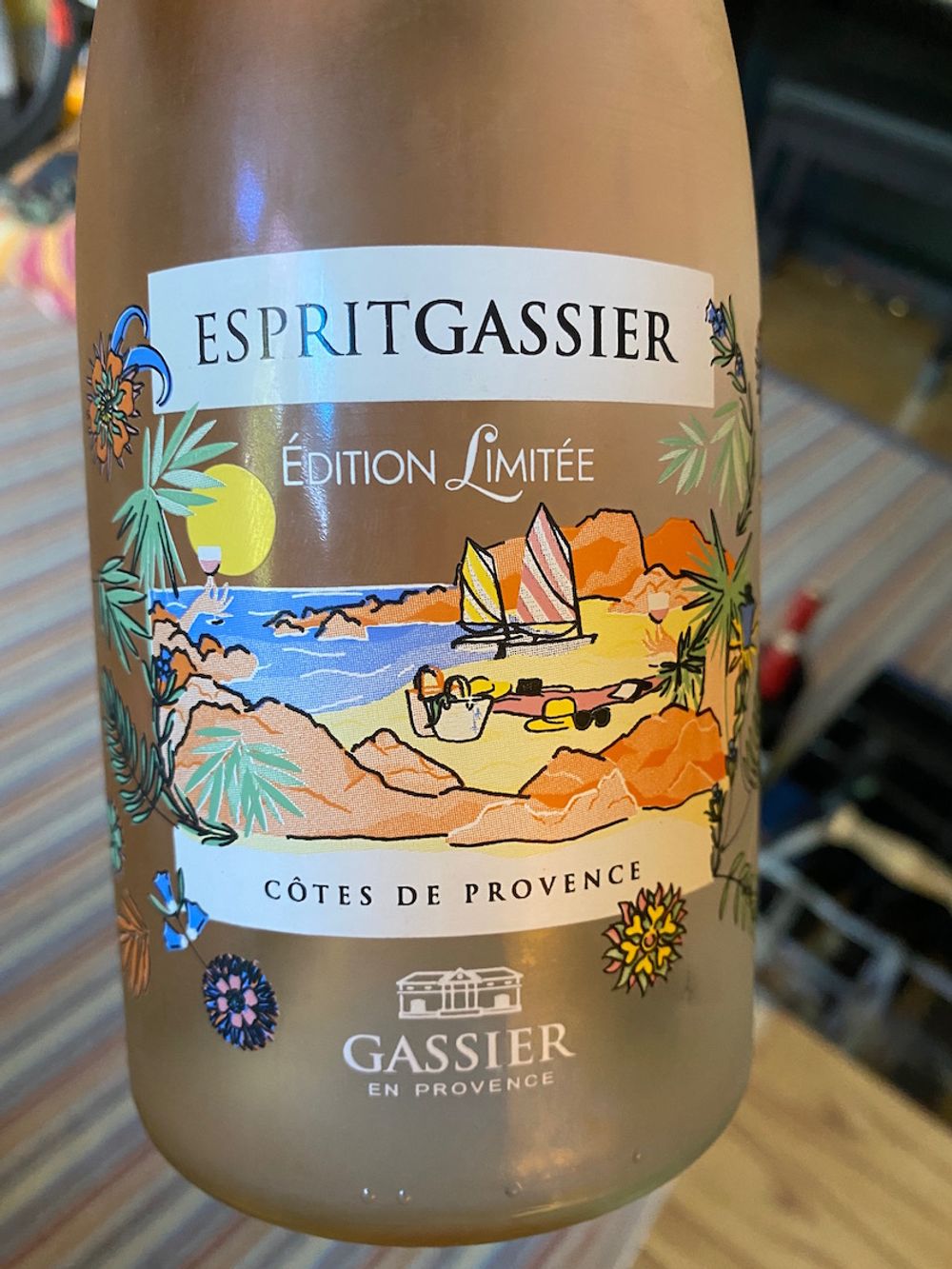
Château Gassier, Esprit Gassier (Limited Edition), 2020
Organic since 2016, this Sainte-Victoire estate is run by fifth generation winemaker, George Gassier, who was joined in 2010 by Olivier Souvelain with the task of giving the vineyards, buildings and image an overhaul.
It’s easier to say which grapes are not in this 10-varietal blend which comprises Syrah, Grenache, Cinsault, Mourvèdre, Rolle, Clairette, Tibouren, Sémillon, Cabernet and Carignan.
The wine is light pink; has pretty floral aromas of lemon blossom, white peach, fresh almond; the palate is ripe, rounded, fresh, with a lovely juicy palate, a little redcurrant, and green lime coming in on the finish which gives it a nice sour edge. 13% abv (Enotria&Coe) £14.25.
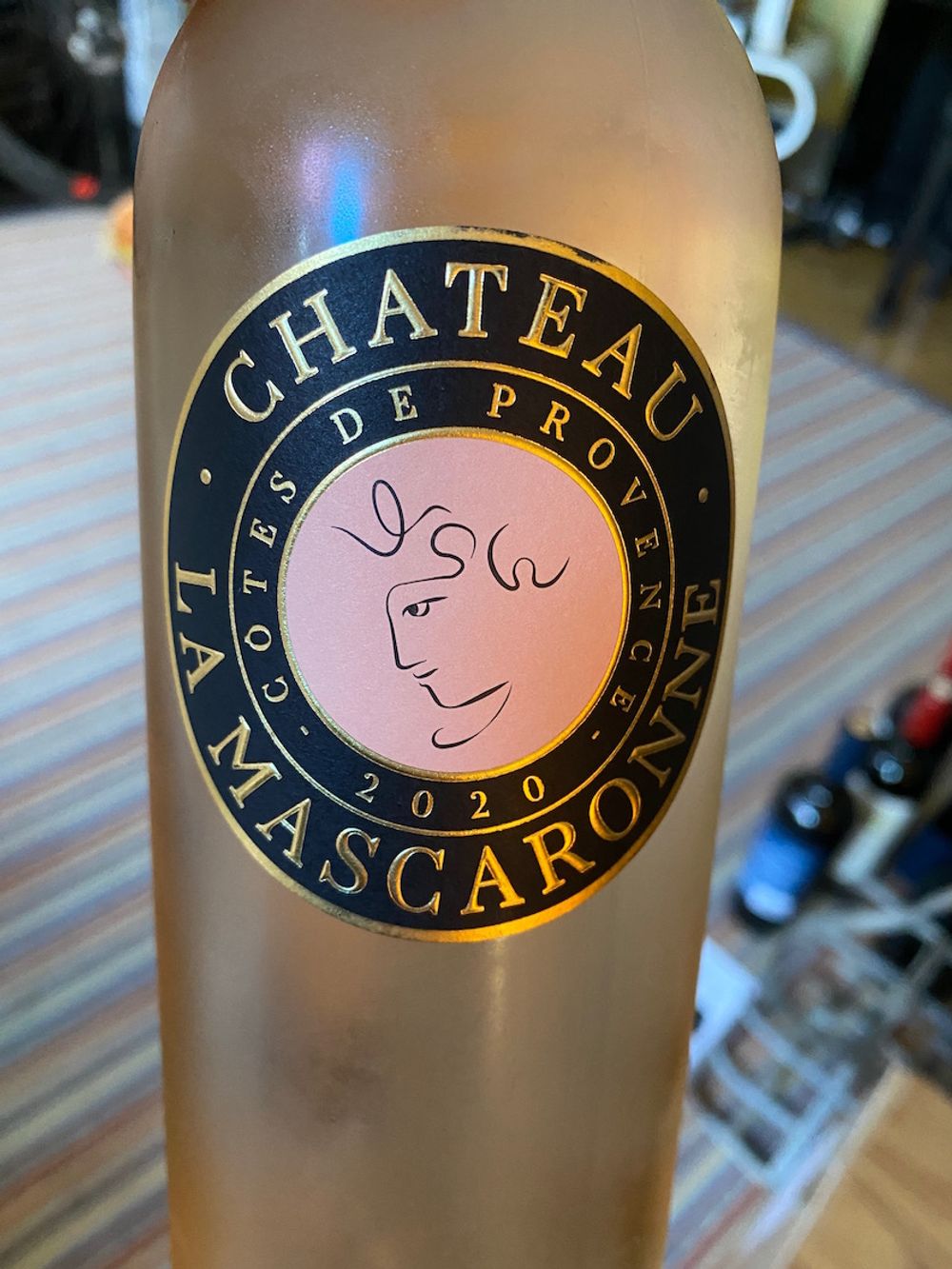
Château La Mascaronne, 2020
Château La Mascaronne has an illustrious past and future – having been bought by Tom Bove in 1999 (the man who sold his previous estate Miraval to Brad Pitt and Angelina Jolie) and last year sold this estate to Cos d’Estournel’s owner Michel Reybier.
Reybier knows good terroir when he sees it and this is an exceptional spot, with low-yielding vines hand-harvesting ripe Cinsault, Grenache, Rolle,Mourvèdre to make this blend.
It’s quite understated and elegant – luminous pale pink to look at with pale rose petal on the nose (a slight vegetal element blows off after a few minutes); on the palate the wine is fresh and chiselled, structured, with a mineral core, and well integrated acidity framing discrete fruit. 13.5% abv (New Generation) £24.

Château Les Mesclances, Cuvée Saint Honorat, 2020
This family-run property can trace its origins back to the 16th century, of which the current owners are ancestors. Part of the La Londe denomination, which has the smallest proportion of rosé as its vinous output in the whole of Provence, it is the maritime influence here which is key as this is the driest and hottest part of the region.
A blend of Grenache and Cinsault (60/40) this is typical of the area with full body, soft acid and a saline edge from its proximity to the sea. To look at, the wine is a pale salmon pink; the aromas are delicate, with grapefruit, Mediterranean herbs (slightly grassy), and pale rose petals; the mouthfeel is rounded, light-medium on the palate, elegant, good balance, with enough structure to give it gastronomic uses as well as drink as an aperitif. 13.5% abv (AB Vintners) £13.

Château Saint Maur, Cuvée Saint “M” Rosé, 2020
Another member of the Cru classé club – this is evident all the way through this top notch wine. Terroir plays a key role here with the schist and quartz-rich soils adding complexity and minerality.
To look at the wine is pale pink; the nose is complex but attractive with white flowers and wild strawberries and cream; the mouthfeel is wonderfully fresh, smooth and rounded, it still has a bit of weight with strawberries and grapefruit on the finish. I reckon you could lay this down and age it if you wanted (it has bags of zingy acidity) – the wine is refreshing, nicely textured, and leaves quite an impression on the long, saline finish. It’s another ‘all sorts’ of a blend with Grenache 40%, Cinsault 20%, Syrah 15%, Tibouren 10%, Mourvèdre 5%, Rolle 3%, Carignan 3% and Cabernet-Sauvignon 3%. (Astrum) £21.50
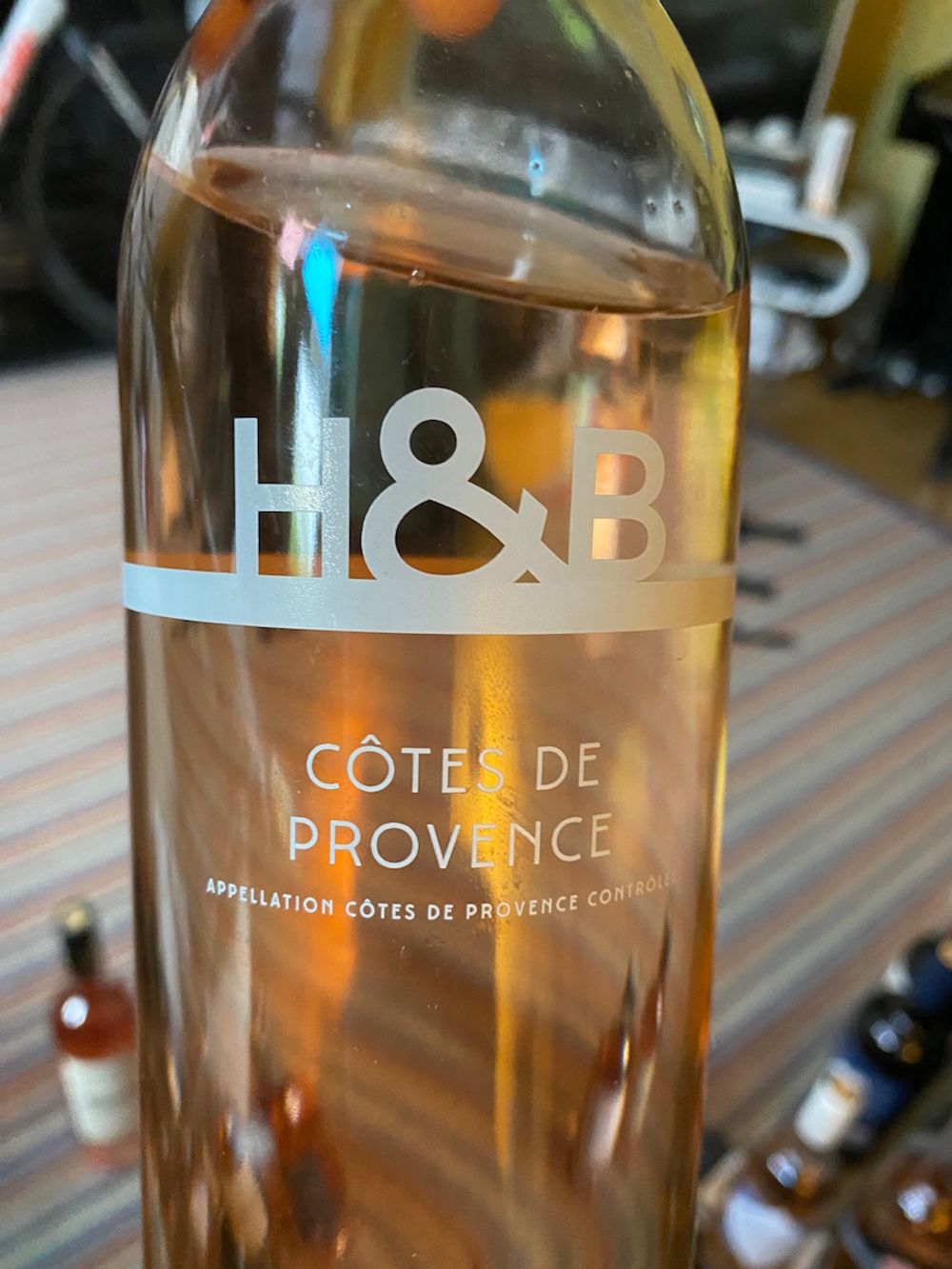
Hecht & Bannier, H&B Provence, 2020
A couple of negociants who have been making wine in the Languedoc, Roussillon and Provence for the past 20 years – Hecht & Bannier make interesting blends, using fruit from different denominations to create complexity and macerating Grenache and Syrah together, for example, so that the reductive character of Syrah balances the oxidative natural character of Grenache. They also use their experience of Burgundian cellaring to good advantage.
The label and the website exude a certain kind of minimalist cool, heavily designed and lifestyle based (one of the Provence rosés you could take to a yacht party). The wines are very good though. This is a dry, aromatic blend of Grenache, Cinsault, Syrah and Rolle.
Pale salmon pink; notes of fennel and purple flowers. In the mouth the wine is medium weight, textured (part-matured in concrete) and quite lively; it has a bright and chiselled quality, fruity but dry and balanced, flavours include red berry fruit, soft orange flavours, mineral and saline twist on the long-ish finish. You’ll really want another glass. 13% abv (Bancroft) £20.
Côtes de Provence Sainte-Victoire
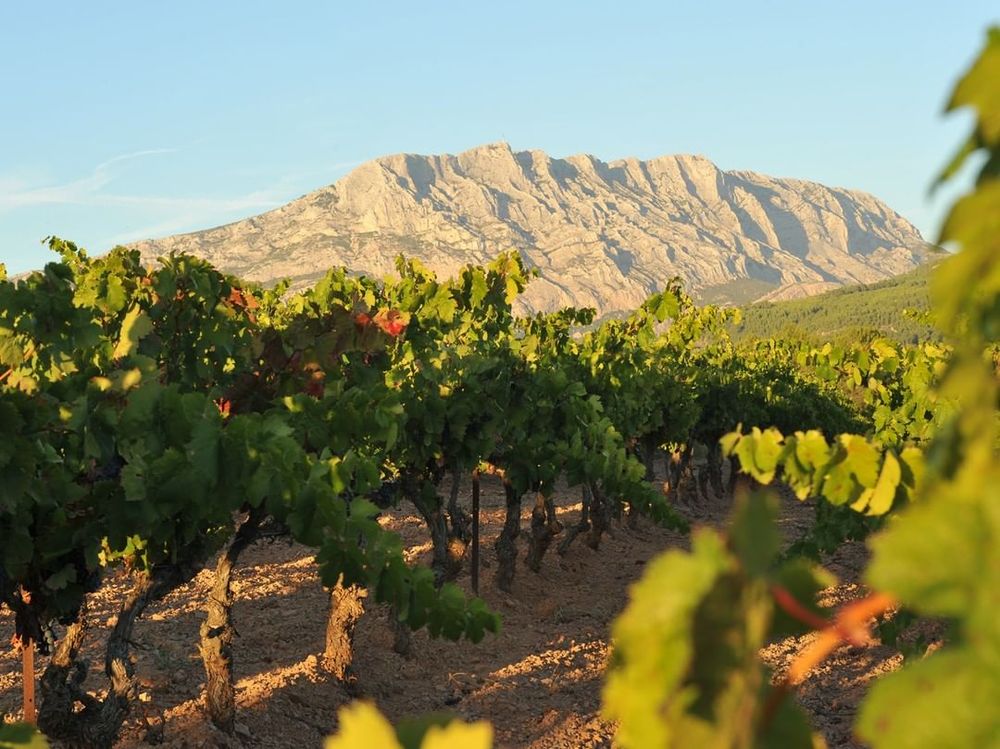
Vines at Henri Bonard
This denomination was created in 2005 and covers 501 hectares. The altitude is higher with the soils mainly shallow limestone and gravel clay sandstone, resulting in wines that tend to have an attack that is crisp and fresh. The main grapes here are Cinsault, Grenache and Syrah with Cabernet Sauvignon, Carignan and Mourvedre used plus the addition of white varietals.

Famille Négrel, Mas De Cadenet, 2020
The region’s hallmarks of concentration and freshness are evident in this cuvée from the Negrel family, one of the oldest family of winemakers in Provence. It’s a blend of 45% Grenache, 45% Cinsault and 10% Syrah. On the eye the wine is very pale pink, limpid; the nose is complex but subtle, with discrete red berry fruit, herbs, crushed rocks, white flowers and watermelon; the palate is fresh, clear-cut, with peach, gooseberry, white melon and redcurrant flavours; there’s a nice tension to the wine, it has a mineral core, is focused, textured and gastronomic. Good length with mineral, berry fruit and a citrus lift on the finish. 12.5% abv (ABS) £17.85.
Coteaux d’Aix-en-Provence
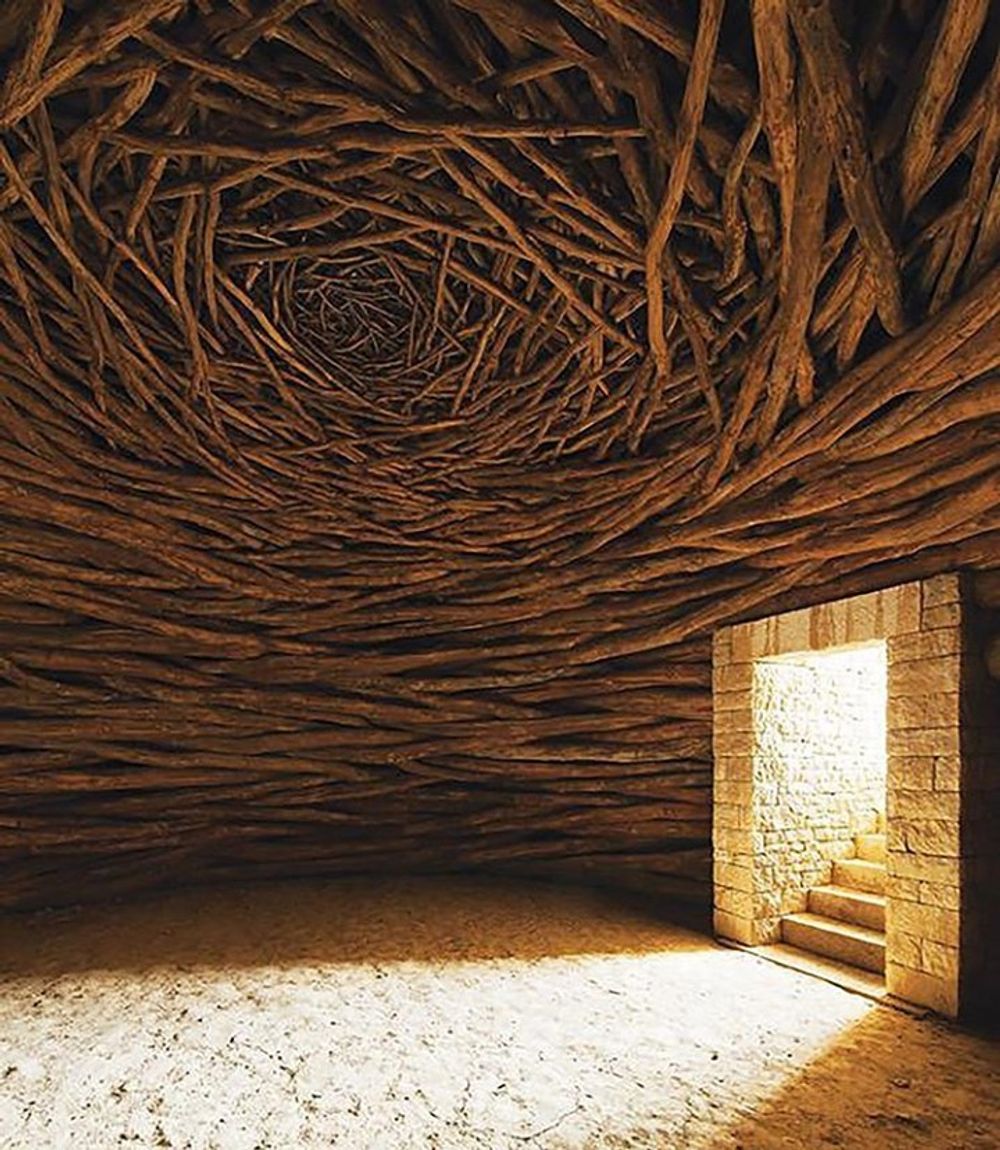
The Oak Room by Andy Goldsworthy is just one of many art installations within the vines at Château Lacoste
Created in 1985, this is the furthest west of the appellations which has, again, diverse terroir. 32 million bottles are produced here (86% rosé) from 72 independent wineries and 12 cooperatives working on the region’s 4,344 hectares – this being 19% of all Provence wines. The main grapes used here are Cinsault, Grenache, Counoise, Mourvedre and Syrah with Cabernet Sauvignon and Carignan also used.
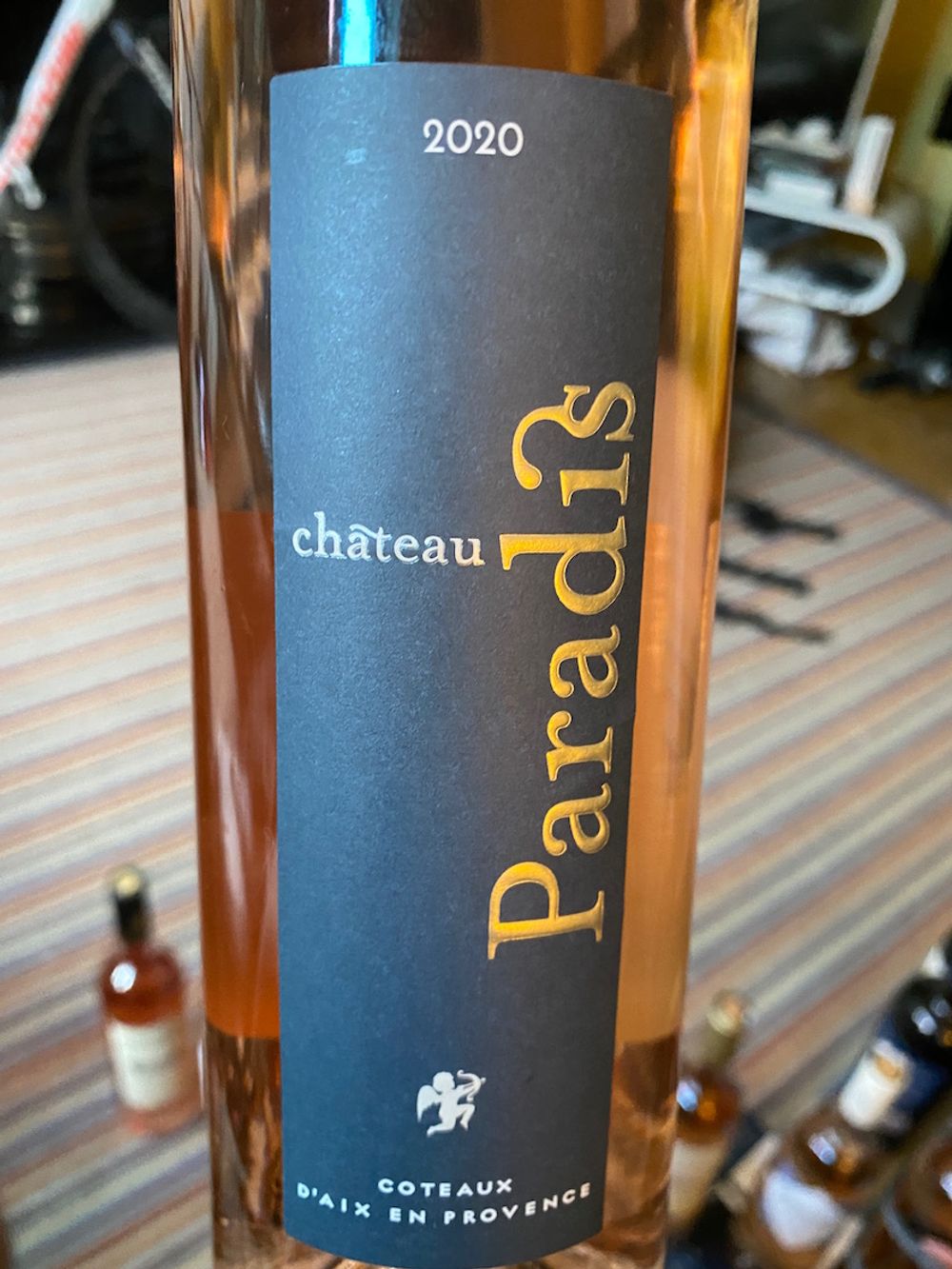
Château Paradis, 2020
An 80-hectare estate built on the site of a Roman villa dating back to 21BC, the estate has changed hands three times in the past 40 years but is now under the ownership of the Thiéblin family which is focused on making traditional Provence wines, has restructured the vineyards and acquired another 50 hectares from Château de Fonscolombe.
A blend of Syrah 60%, Grenache 30% and Rolle 10% from 50 year-old North-facing vines on shallow limestone soil, this is complex and mineral.
To look at the wine is light peach with orange glints; complex nose with stone fruits in syrup, lemon flesh, a little bit of wild fennel hanging in there, ripe but fresh; medium bodied, rounded palate, full-flavoured, fruity, but balanced with ripe berry fruits, kept in check by a nice line in grapefruit acidity, and a fine-grained texture.(Ellis of Richmond) £13.95

Château Vignelaure, 2020
Although this quintessentially Provençal estate is currently being upgraded by a Swedish couple, its original construction in the 1960s is down to Georges Brunet, the former owner of Bordeaux’s Château La Lagune, who built a new property here and changed its name from Saint Estève (so it didn’t get confused with Saint Estèphe) to Vignelaure. The estate was a pioneer of Cabernet Sauvignon in Provence, with rosé only being made here as late as 1992 and a white wine added in 2013.
This rosé is a blend of Grenache 40%, Syrah 30%, Cabernet Sauvignon 20%, and Rolle 10%, from low-yielding vines grown on limestone and clay mixed with gravel.
To look at, the wine is salmon pink; it has a reasonably discrete nose – pretty peaches, red fruit, an earthy note; the palate is full-flavoured, dry and nicely balanced, particularly if you favour a slightly leaner style of Provence rosé.
Fresh and lean, very dry, full-flavoured, less full-rounded body than a lot of Provence rosé – the acidity feels a little high; red berry fruit (strawberry, raspberry). Excellently balanced and complex finish – textured, citrus, grapefruit zest, fennel and a hint of summer pudding and cream on the finish. (Wine Society) £16.

Domaine des Oullières, Harmonie, 2020
Based just outside the picturesque village of Lambesc, 20 kilometres north-west of Aix-en-Provence on the elevated escarpment of the Chaîne de la Trevaresse, Domaine des Oullières has been run by the Ambrosio Collomb family for a whopping seven generations.
This wine is a blend of Grenache, Cinsault and Syrah from vines grown on clay-limestone soil.
Very pale pink on the eye and attractive on the nose with white peach, pear, gooseberries, hints of musk and sandalwood; the palate has grapefruit, citrus, with fine linear acidity, balanced with plumper orchard fruit. The palate has a lively zest to it, with a nice energy to the wine generally, rich but balanced mouthfeel, fine texture, mineral with a saline tinge on the finish. 13% abv (Yapp) £12.95.
Coteaux Varois en Provence

Biodiversity in action at Château de L’Escarelle – 100 hectares of vines set within 1000 hectares of woodland
Created in 1993, this is the youngest of the three appellations, with 18 million bottles produced by 65 wineries and 11 cooperatives from 2,977 hectares – 11% of all Provence wines. Interestingly, a massive 57% of wineries here are organic or HVE accredited. The region has a continental climate with the main grapes being used including Cinsault, Grenache, Counoise, Mourvedre and Syrah with Cabernet Sauvignon, Carignan and Tibouren also used.
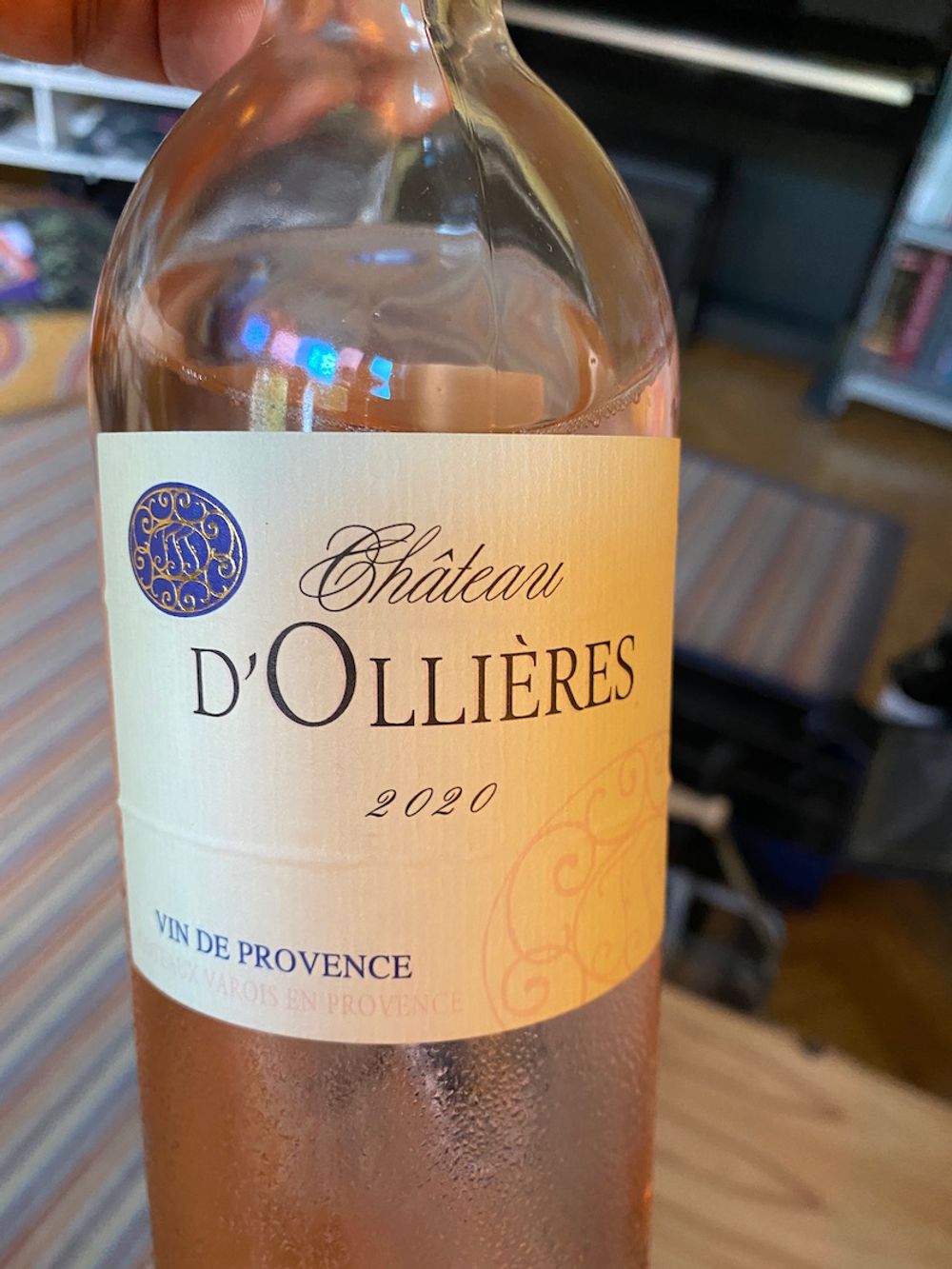
Château d’Ollières, Château d’Ollières ‘Classique’, 2020
The 35-hectare estate of Château d’Ollières is situated in the village of Ollières itself, some 30km east of Aix and is owned by the Rouy family. Vines are mostly planted on clay-limestone soil at altitudes of 450 metres which gives this wine the key benefits of the Varois region in that the hot days of summer are followed by very cool nights which allow the grapes to ripen slowly but intensely. Organic agriculture is practised here and all the fruit for this dry, spicy rose 50/50 blend of Grenache Cinsault are harvested by hand.
There’s a lot going on under the surface of this wine. To look at it’s very pale, luminous pink, limpid; on the nose there’s a slight spicy, peppery note, I got fresh flowers, red berry fruit and then on the palate there’s real energy and liveliness. It’s a great palate, it’s got texture, delicate red berry fruit, structure and yet it is all so discrete and balanced. (Les Caves) £13.70.
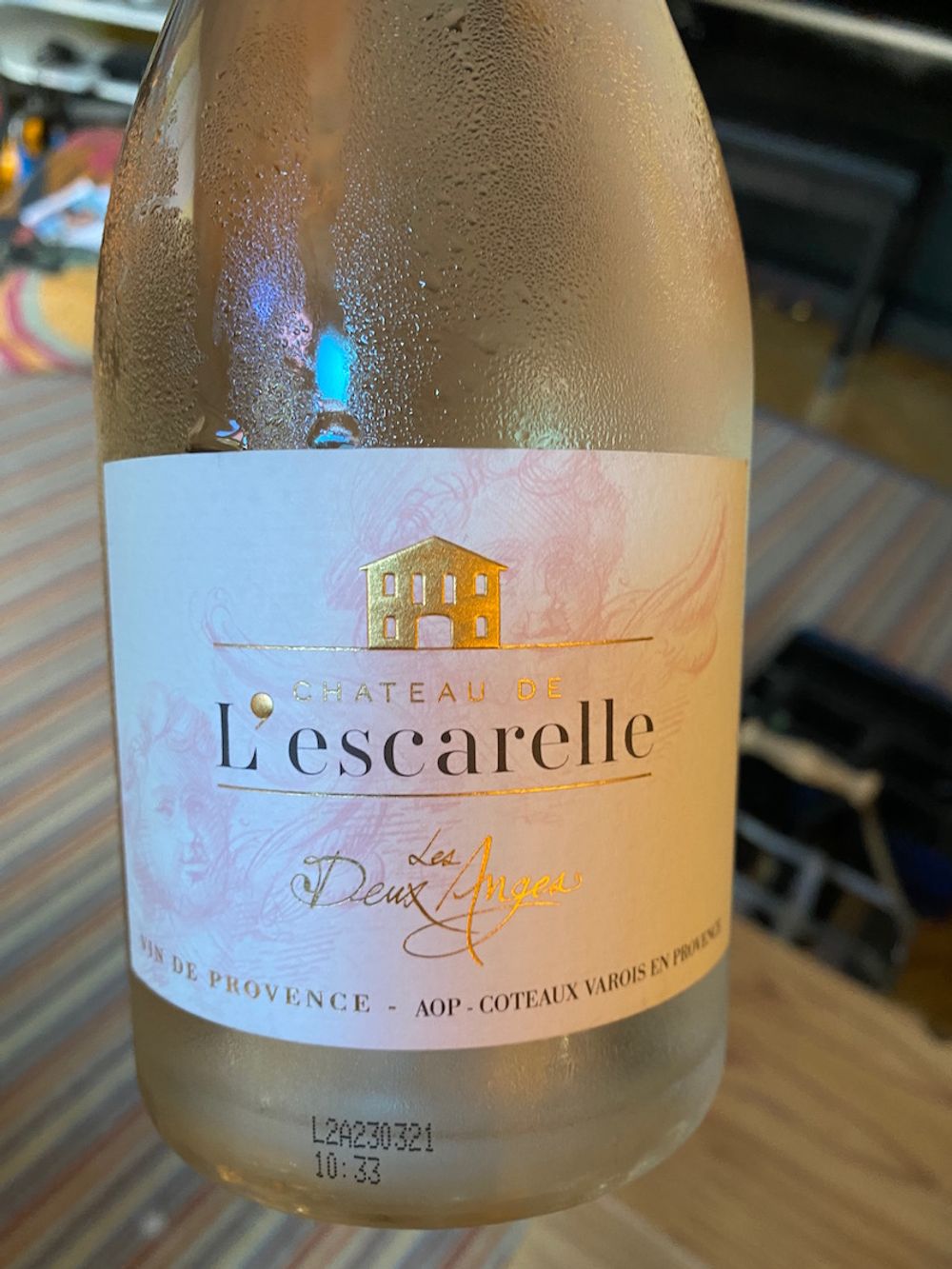
Château de L’Escarelle, Les Deux Anges, 2020,
This is one of five rosés produced by the prestigious Château de L’Escarelle, whose 100 hectares of vines are situated within 1000 hectares of woodland – a beautifully diverse location. Its organically-certified vines also benefit from being planted at an altitude of 500m above sea level which lengthens the growing season, the hot dry summers in this Mediterranean climate being offset by the cooling effects of the Mistral wind.
This particular cuvée is a blend of Syrah 60%, Grenache 20%, and Cinsault 20% aged on fine lees. To look at the wine is very pale pink, limpid, with elegant aromatics of wild strawberries and pink grapefruit skin; The palate is fresh, citrus, grapefruit, berry fruits; very elegant and subtle; precise, tense, cleansing, good gastronomic wine with a long length. 13% abv. (Alliance) £16.99
All prices are Recommended Retail Prices.
To follow the world of Vins de Provence try these handles: on Instagram: @vinsdeprovenceuk, and Facebook and Twitter: @provencewinesuk
